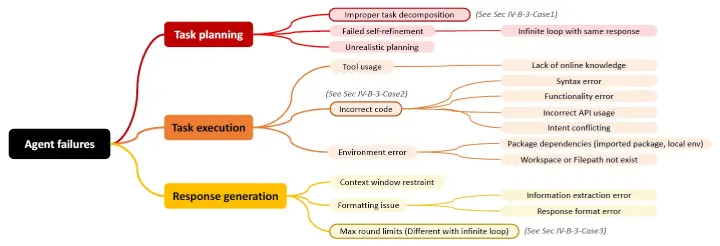AI Insights
- Planning is fragile – Agents often mis-decompose tasks or loop endlessly on the same mistake.
- Execution falters – Code bugs, missing dependencies, and API misuse remain frequent pitfalls.
- Responses misalign – Agents sometimes “overthink” or exceed interaction limits, producing incomplete or unusable outputs.
What’s striking is not the failure rate itself (50% is already an improvement over last year) but where failures occur. Most breakdowns happen upstream—in planning and interpretation.

For practitioners, the takeaway is clear: success won’t come from throwing ever-larger models at the problem, but from designing agentic workflows with robust planning, error-handling, and self-diagnosis.
As AI and automation leaders, we should be asking: How do we build agents that learn from feedback, break free from infinite loops, and know when to stop? That’s where the real breakthroughs lie.
And for organizations weighing a shift from brittle, inflexible RPA bots to AI agents: proceed with caution. While agentic AI is promising, today’s 50% success rate signals that it’s not yet enterprise-ready. Do not let marketing hype blind you from the need for real reliability and robustness.
#AI #AutonomousAgents #AgenticWorkflow #Automation #AIAgents #AgenticAI #RPA
Why do autonomous AI agents fail at completing tasks?